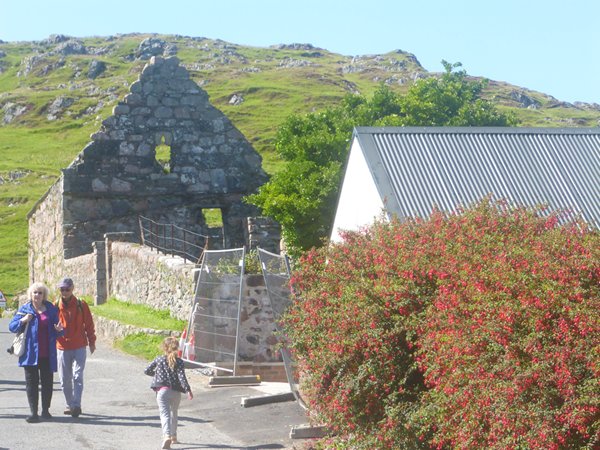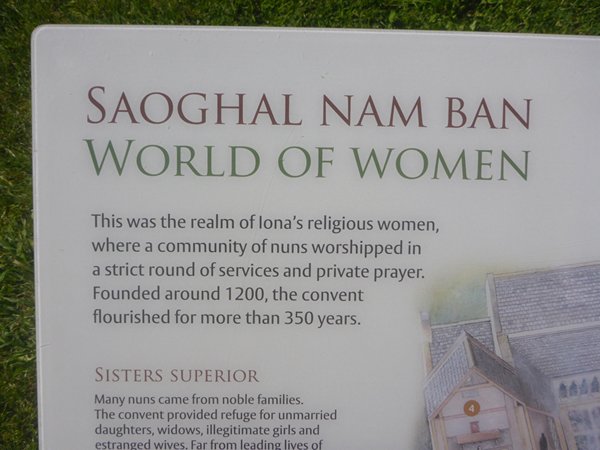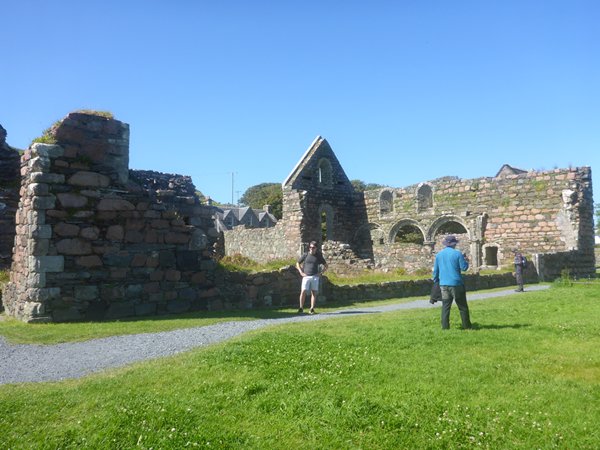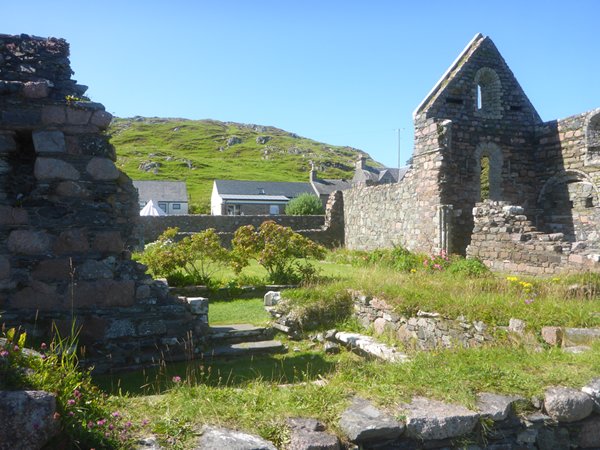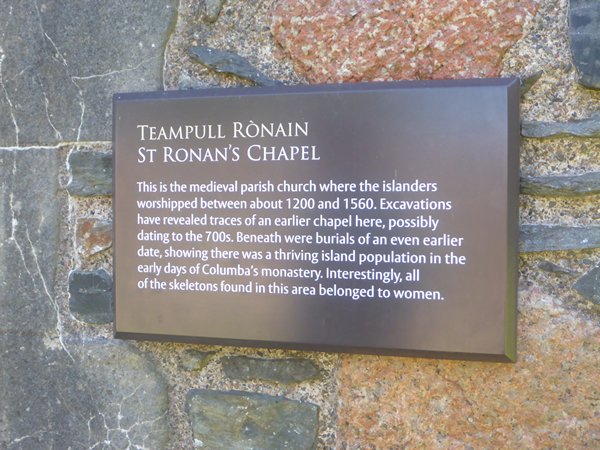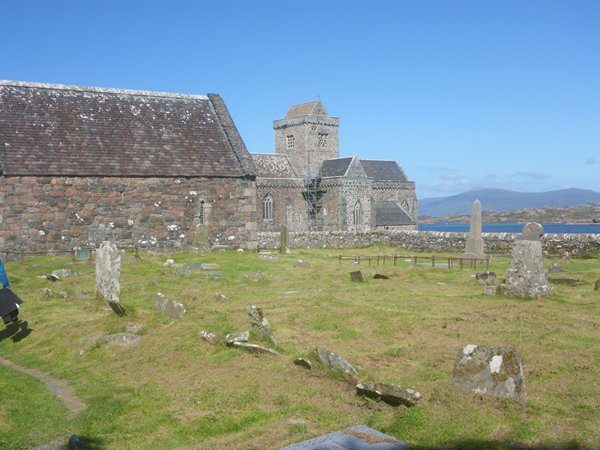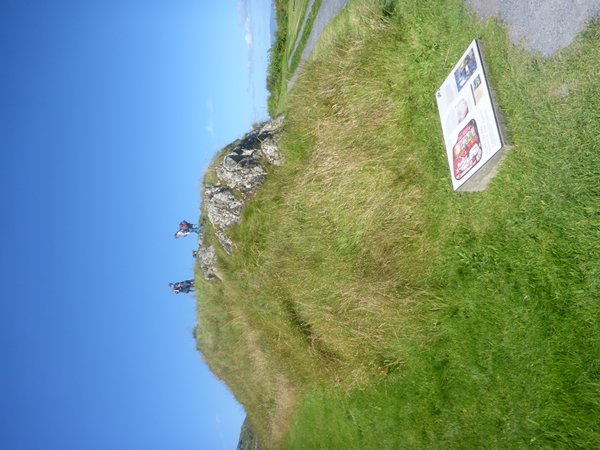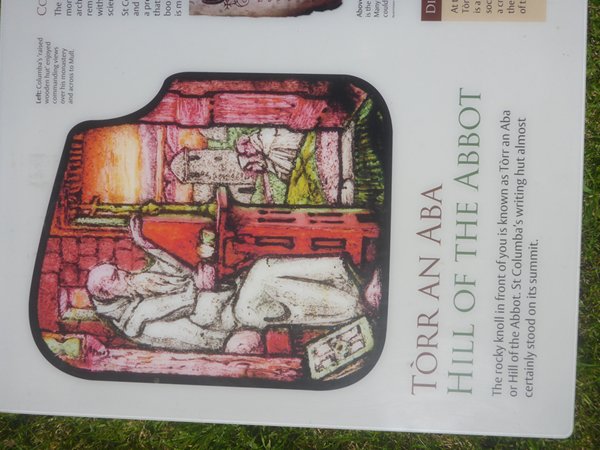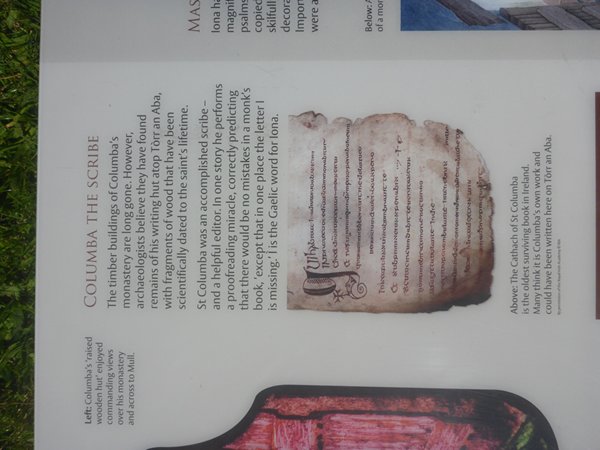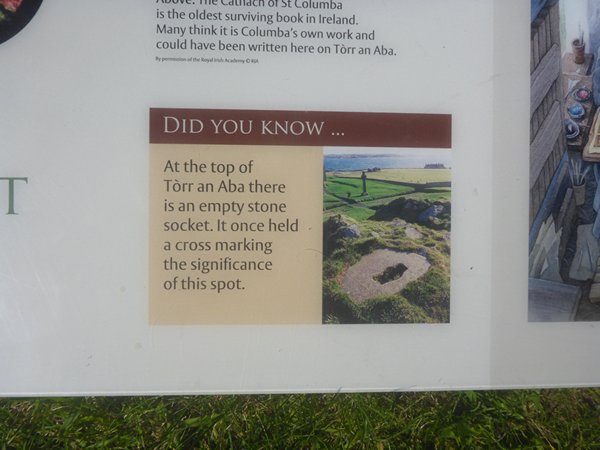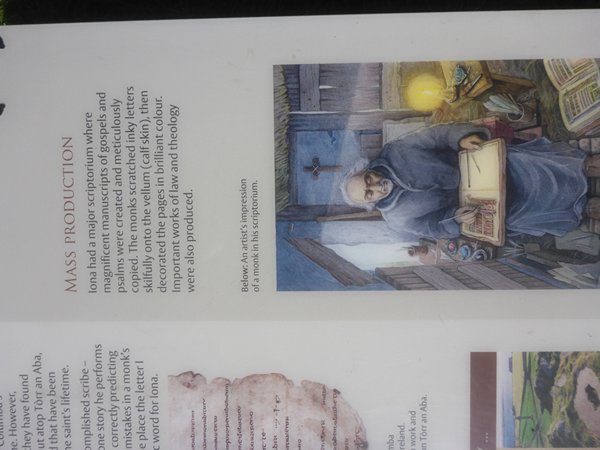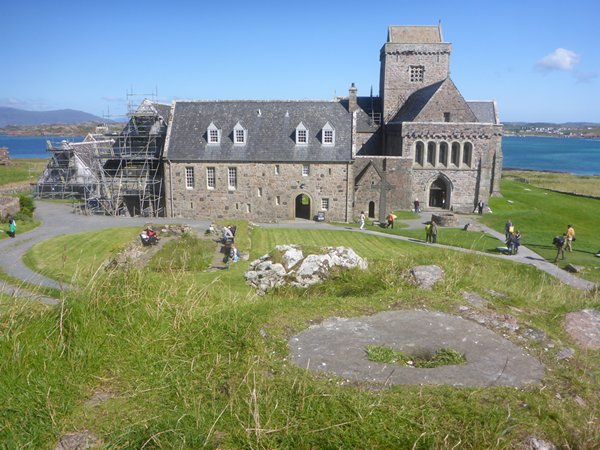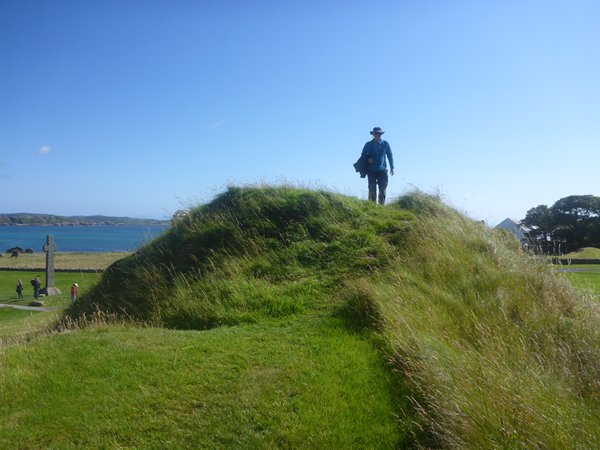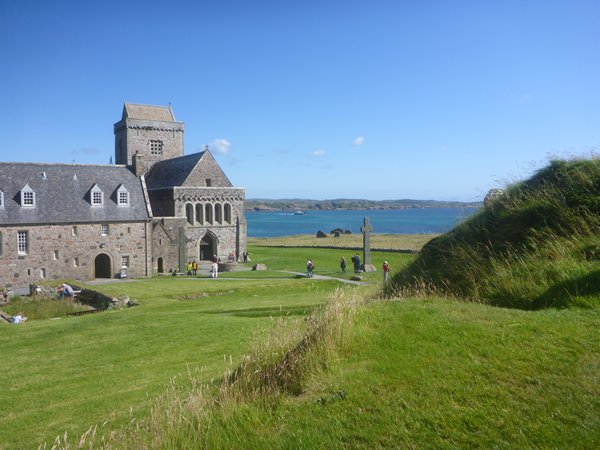Outside Iona Abbey

Outside Iona Abbey
Back ashore we milled with the other visitors; pilgrims, geologists and tourists around the nunnery with its sunken gardens within the ruins where people would sit alone or in small numbers to chat, and then moved up the narrow road to the cemetery and abbey. It is thought that many kings were buried here, including Macbeth the 11th century Scottish king famous for efficient government and the promotion of Christianity and not much resembling Shakespeare’s character according to some sources. Also of course in recent times the Labour Party leader John Smith, a Scot and dedicated politician from the age of 23 from Argyll, who died suddenly at the young age of 55; the epitaph on the plain stone reads, appropriately, ‘An honest man’s the noblest work of God’.
Just to the side of the path in front of the Abbey is what looks like a mound of rocks jumbled with soil rising to three or four metres and one might wonder why it has not been tidied away, as the rest of the grounds are pristine. This interesting pile has its own name, Tòrr an Aba and back in 1957 Professor Charles Thomas and his team of archeologists dug carefully in to the mound and found the charred remains of a wooden building.
Thirteen years later I
was a young
woman helping my family run their recently bought dairy farm
near Ashwater in
Devon. It had been a big adventure for me but I was beginning to
see there was
no future there either for work or living, so I bought a copy of
The Lady Magazine.
Turning to the classified ads I applied for a job as nanny to a
professional
couple in Leicester and found myself living with Professor
Charles Thomas and
his lovely wife, Jessica and their three children, Richard,
Martin and Susannah.
I had the good fortune to look after the children firstly in
Leicester, where
Charles was head of the Department of Archeology at the
University, and then in the
summer, at Higher Pencobben near Godrevy in Cornwall, so you can
imagine my finding out
about his earlier work on Iona was of much interest to me, and
from now I will always remember the hillock as St Columba's cell
and Charlie's Hill.
And so has it been to the worlds of archeology and history because Charlie kept those samples of wood with him when he moved to near Truro, on the educated hunch they were part of the wooden building in which St Columba and his monks did much of their work, copying scriptures and writing Christian manuscripts; a tradition which continued despite numerous Viking raids over two hundred years, until the Dissolution by Henry VIII and included most notably The Book of Kells, a product of the ninth century.
It is a pity that Charlie did not live quite long enough to learn that through the sophisticated process of carbon dating the fragments of wood he kept safe in his garage for all those years do, in fact, date from the life of St Columba.
The guide in the ticket office suggested we visit the museum first as it was due to close soon and when we entered the darkened room we were in awe of the gently lit three high crosses towering over us. Brought in from outside to protect them, replicas now stand in their place to take what the weather throws at them.
They were made here on the island; St Oran’s is possibly the first ever high cross sculpted from stone and stands to the left of and behind St John’s the first high cross with its distinctive ring designed to give extra support to the lateral arms. When you think of the way the symbol of the cross has spread all around the world, in and outside religious buildings, in homes, alcoves, around necks and on literature and art, then it is amazing that the creation of high crosses probably all started here! Although, since Jesus died on a high cross, it is a little hard to believe that no-one thought to use them as a symbol in some form in the first half millenia after his death.
There are numerous satellite chapels around the main abbey and we were intrigued by them, taking our time to explore and soak up the awe of the views and surroundings. The faithful feel the thinness of this place, the close, thinly veiled separation between heaven and earth, is like nowhere else on earth and I can understand how the remoteness of the area and the spacious lay of the land in the Abbey’s vicinity give one the feel the sky is falling down around the distant horizon, enclosing the area in a bubble of religiosity. But you don’t have to be a believer to appreciate priceless Iona, you just have to come here.
Columba lived and worked there until he died on 9th June 597, after thirty- four years of spreading the word of the early Christian church far and wide across Europe. He was buried for a while beneath the tiny chapel of his name, but now his relics have been spread around, shared between various places with religious intent and significance.
Time was pressing on for us. Liz had said supper would be around 6.00pm so we started making our way back to their home, completely forgetting to look inside the abbey!! We will have to go back once Zoonie is settled into Kerrera Marina to spend more time with Liz and Alan, with a sailing season behind us, and to visit the abbey interior.
I will divide the pics between two files because there are quite a few.

